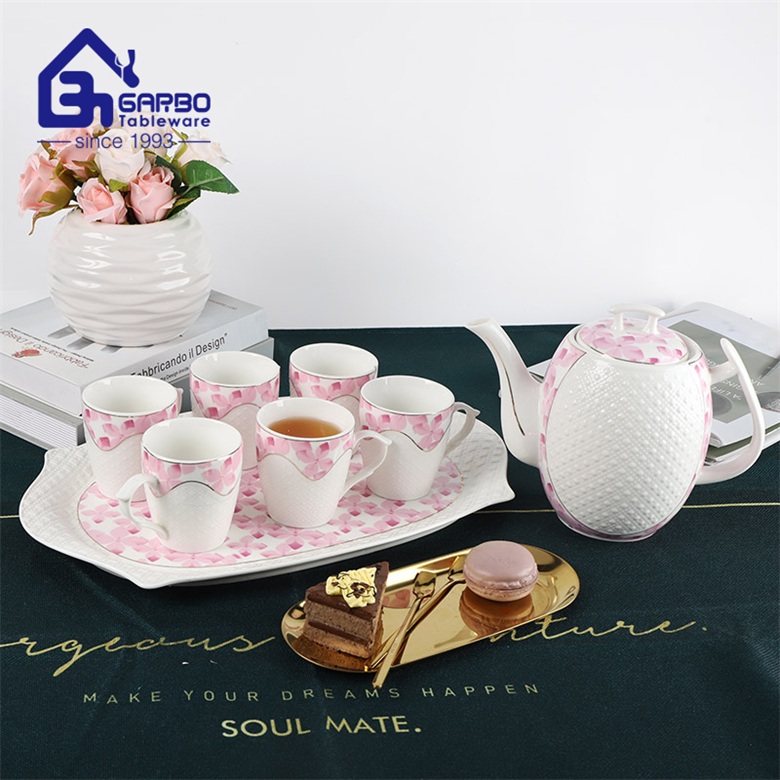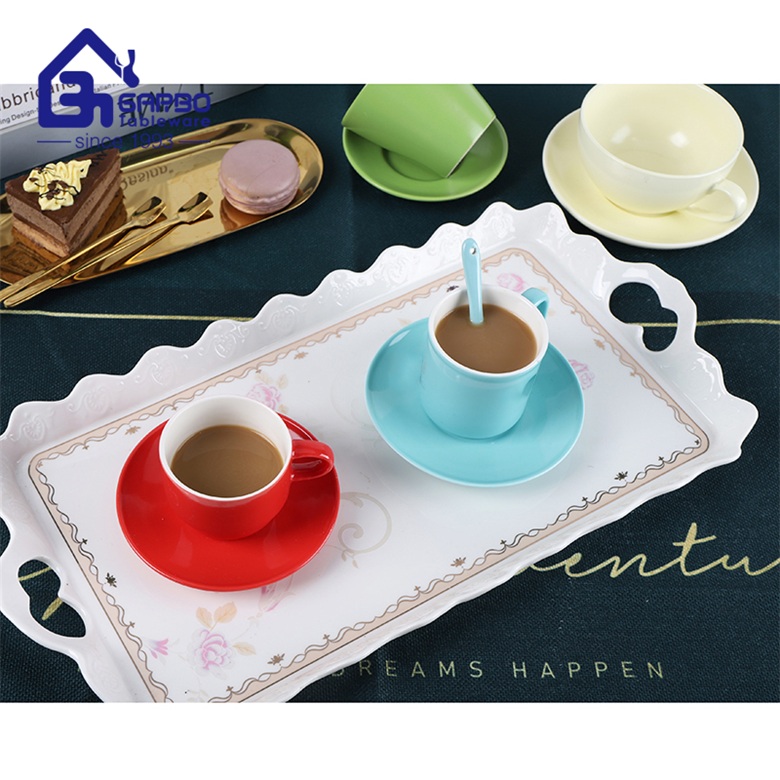Pulished on Apr. 17, 2023
Ceramic mugs are a popular choice for coffee and tea drinkers due to their durability and heat retention. However, over time, the color of the ceramic mug can fade or even completely disappear. There are a few reasons why this can happen.
Firstly, the quality of the glaze on the ceramic mug can affect its ability to retain color. If the glaze is of poor quality or applied unevenly, it can cause color to fade or appear patchy. The glaze acts as a protective layer over the ceramic material, and if it wears away, the ceramic can become exposed to heat, light, and other environmental factors that can cause the color to fade.
Secondly, exposure to light can also cause the color of a ceramic mug to fade. Ultraviolet (UV) light can break down the molecules in the pigments used to color the mug, causing them to lose their vibrancy over time. This is why it's important to keep ceramic mugs out of direct sunlight and store them in a cool, dark place when not in use.
Finally, the type of color used to decorate the mug can also affect its longevity. Some colors, such as red and orange, are more prone to fading than others. This is because they contain pigments that are more sensitive to light and heat. If you want your ceramic mug to retain its color for longer, it's best to choose colors that are known to be more resistant to fading, such as blue or green.
Adding color to a ceramic mug is a process that involves applying pigments or dyes to the surface of the mug. There are several different methods that can be used to achieve this, including:

According to the order of "glaze" and "color" in the production process, ceramic cups are divided into over-glaze color, in-glaze color and under-glaze color. As the name implies, over-glaze color is glazed first, then painted, and then it will be fired at a low temperature. The pigment is on the surface of the glaze, and it feels obvious to the touch. It is not only easy to decolorize, but the heavy metals in the pigment are also easier to seep out. Especially when the ceramic mug encounters acid, it oozes more (just in case, you are not supposed to pour acidic drinks into ceramic cups), and chronic poisoning is easy to occur after long-term use
In-glaze color of the ceramic mugs is applied with glaze and color together. The firing temperature can make the glaze melt and the pigment sinks into the glaze. It is covered by the glaze layer after cooling, so that the surface of the product is smooth. The painted surface of the in-glaze is separated by enamel, which is relatively safe. But it will become darker after long-term use. If you find that your cup is black (of course, tea stains and coffee stains are not counted), please just change it.

The safest is the under-glaze color, which is painted first, then glazed, and then fired at a high temperature. The surface of the flower is covered by the glaze layer, which perfectly avoids direct contact between the pigment and the food, and is bright and smooth, and will never fade. When we buy ceramic cups, we must look for the under-glaze color, look for the under-glaze color, look for the under-glaze color, and say the important things three times!
Guides for choing a good quality ceramic that won't decolorize.
Choose handmade or hand-painted mugs: Handmade or hand-painted mugs are often made with care and attention to detail, ensuring that the color is applied evenly and that the glaze is of high quality.
Check the care instructions: Proper care can help extend the life of your ceramic mug's color. Make sure to check the care instructions for the mug and follow them carefully. Avoid exposing the mug to direct sunlight or harsh cleaning chemicals.
The core of the firing process is the firing temperature, which includes high temperature, medium temperature and low temperature. High temperature refers to 1280°C to 1350°C. At this temperature, after oxidation and reduction atmosphere, harmful substances basically disappear or are almost transformed, so it is better. However, medium- and low-temperature ceramic cups often have insufficient porcelain, and the soil on the cross-section of the porcelain may not become porcelain, and it is barely enough for decoration.
The firing of ceramic cups requires high temperature. If the firing temperature is not properly controlled and the melting temperature of the glaze layer is not reached, the pigment may only cling to the surface of the glaze layer and cannot sink into it. It is extremely easy to cause the dissolution of heavy metals such as lead and cadmium in the pigment, and even The amount of migration exceeds the standard (for popular science, the amount of migration is the potential ability of the package to migrate into the food and whether the migration substance is toxic or not).
For high, medium and low temperature ceramics, we can gently flick the ceramic cup with our hands and distinguish it by listening to the sound. Generally, the sound of high-temperature porcelain is relatively crisp, close to the sound of metal materials. However, the sound of medium and low temperature porcelain is relatively dull and the sense of density is low, so don't consider it. When buying a ceramic cup in the future, it is best to pat it habitually like picking a watermelon and listen to the sound. If you buy ceramic mugs online, it is recommended to check whether the details page is marked with "firing temperature 1350°C", or you can turn down the evaluation with fragment pictures for reference.

The discoloration of ceramic cups is most likely due to the irregular production process.Ceramic cups with golden edges or golden patterns need to be baked at high temperature when baking flowers. Some manufacturers cut corners, and the baking temperature is far from the standard temperature of gold water toner. In this way, heavy metals are easy to exceed the standard, and color fading is inevitable. Let me teach you the easiest identification method, put the ceramic cup into the microwave oven for a few minutes (the premise is to ensure that the cup is suitable for microwave oven), if the pattern changes color, you can be 100% sure that the heavy metal exceeds the standard.
In daily life, it is recommended to choose a ceramic cup painted with no color glaze as the cup we drink water from. The inner wall and the place where the mouth will touch should not be painted as much as possible. Remember to go to the regular market to buy, it is best to have a clear test report. Don't be tempted by the kind of ceramic cups from unknown sources on the street stalls, no matter how cheap they are, read "poisonous" three times silently and walk away. It is more appropriate to buy a new cup that can be boiled in boiling water for a few minutes before use.